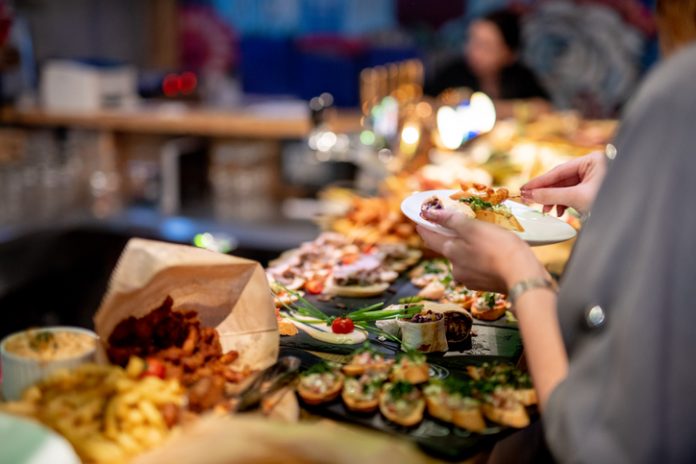
Today’s hospitality markets have new challenges to overcome—especially resorts. No sooner have they begun to regain market share in a post-pandemic world when an economic recession is causing guests to become more cautious of where and when they spend their money and time. The good news is that they continue to spend. According to American Express Global Business, during the third quarter of 2022, business travel reached 71% of pre-pandemic levels. Another report forecasted that travel and tourism revenue will reach more than $854 billion by 2023. Vacations, events, and business travel will continue to bring business to resorts across the country, but the challenge will be competing for the loyalty of more discriminating guests.
So how can resorts and clubs better compete, boost their brand reputation, earn better reviews, and delight guests? It requires thinking outside of the box when it comes to food and beverage service—undeniably not an easy task against a backdrop of worker shortages, supply chain challenges, rising operating costs, and more discriminating guests. Yet, food and beverage service can make a difference when it comes to pleasing guests and differentiating properties. The key is in offering outstanding food, creative drinks, seasonal and promotional menus, and accessible service that not only boosts guest experiences but also employee satisfaction.
Consider the following trends and best practices that can help food and beverage managers elevate guest and employee experience against a changing landscape.
1Personalize the experience.
According to a Hilton survey, 86 percent of respondents said they want recognition and personalization while on the road, and 54 percent of them are looking for personalized food and beverage options. Orders placed or served to guests can provide vital data that can be used to customize the service or identify areas for improvement. Thanks to new technologies, such as food service management software and data analytics, it’s possible to understand specific guests’ likes and dislikes and provide recommendations accordingly within dining or bar settings. This type of data-driven insight also can help to streamline or build out menus with the most popular items.
2Remove the friction.
Offering guests the ability to better serve themselves provides faster and more convenient food and beverage delivery while also addressing worker shortages. This might include providing a wider variety of grab-and-go lunch options, self-serve wine bars, or frictionless ordering and payments via mobile apps. Additionally, buffets can make a comeback after losing popularity during the pandemic. Food service managers can get in on this returning trend by offering theme-style buffets for every season.
3Walk a mile in a guest’s shoes.
Sometimes food and beverage managers can become complacent when they’re at the same location day in and day out, managing staff and budgets and planning menus. It’s important from time to time for them to view the resort through the eyes of the guest, experiencing the resort as they do. They might uncover that there are not enough food and beverage services across various locations, or that they are too difficult for guests to easily access. They might also realize that they are losing incremental sales because guests are traveling down the road to a Starbucks since the resort’s coffee service closes early or doesn’t offer the same level of barista quality.
4Host more functions.
Whether it’s a wedding, a golf-charity event, or a business conference, catering an event is a major source of revenue for hotels. Many resorts are looking for ways to expand those events beyond the ballroom, such as in garden spaces or golf courses, but offering food and beverage service beyond the traditional setting can be challenging since they often require food prep stations and electricity for heating and refrigeration. Food and beverage managers can get creative by mobilizing golf course beverage carts, providing mobile coffee service stations, or arranging more food stations—especially when wedding parties miss out on cocktail hour while having professional photographs taken.
5Partner with the community.
It often takes a village to be successful and that goes for resort dining services. Businesses that are integrated into the local community often do best, regardless of the fact that they may be part of a large resort network. This could mean joining local business organizations, offering to host charity golf or other events, or serving locally sourced food. Leverage community partnerships to boost the guest experience. For example, work out a deal with local restaurants for special promotions and discounts for guests, and reciprocate with hotel dining discounts for local residents.
Hospitality is becoming a complex and competitive market, and offering superior food and beverage service is the key to differentiating a brand and gaining market share. Gone are the days of resort dining services offering three meals a day from one or two halls with the same menus and limited food service in between. Managers today need to think outside the box when it comes to providing a better experience for guests—one that focuses on personalized service, high-end quality, convenience, and more options. It’s a changing landscape where innovation is the secret ingredient.
>>> Read full article>>>
Copyright for syndicated content belongs to the linked Source : LodgingMagazine – https://lodgingmagazine.com/five-best-practices-to-increase-market-share-and-gain-loyal-guests-for-resorts/










